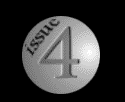In the last sequence of Les Quatre Cents Coups, Antoine escapes
from a reformatory on the coast of France. He heads for the road
and follows it toward the ocean, all the while running as hard as
he can. The camera tracks him for over two minutes, giving us a
head and shoulders side-shot of him as he runs. Finally, he
reaches the sea and the camera waits back as he scurries down to
the water's edge. Now at some distance from him, the camera still
follows him along the waterfront. As the sea rushes in he backs
off, turning away from it. Suddenly the camera zooms in and at
that precise moment Antoine looks up and into the lens. The shot
is frozen. He looks confused and young. The image is truly
arresting.
What is it that prevents us seeing through the image to a
puzzled and lost schoolboy? Essentially, the image jars us because
it comes into direct conflict with all of our previously
formed expectations. There is a youthfulness in his face that we
haven't seen before; it is seen in his confusion, his wide-eyed
expression of being lost. This forces us to notice his face as if
we haven't quite seen it before. We see it as intimate, immediate,
a new direct communication between Antoine and ourselves. By
altering that which the face refers too, Truffaut has drawn our
attention to it as something we are used to reading as a signpost
to the mind.
Furthermore, what we might expect from Antoine at this point is
a look of happiness. The sea represents freedom and escape; we
have followed him on his journey down to this goal but now that he
has arrived nothing has really changed, the sea has not lived up
to his expectations as a haven of peace. He turns his back on it
and runs back up toward the camera; uncertainties have been
reinforced. Hence, the confusion–-Antoine does not know what to
think. This confusion and uncertainty jars our expectations of
seeing a happy Antoine--once again creating an image that resists
transparency and easy interpretation. It is this resistance that
causes our arrest in the face of the image.
As a general comment, we might first note that the image of the
face is used by Truffaut to unsettle viewers--to defy their
expectations. Tradition is broken for the close-up is no
longer a vehicle for confirming our expectations regarding the joy
or distress of the character. Instead, the face is itself the
object of art; we are forced to take note of it and not merely to
that which lies beneath it.

